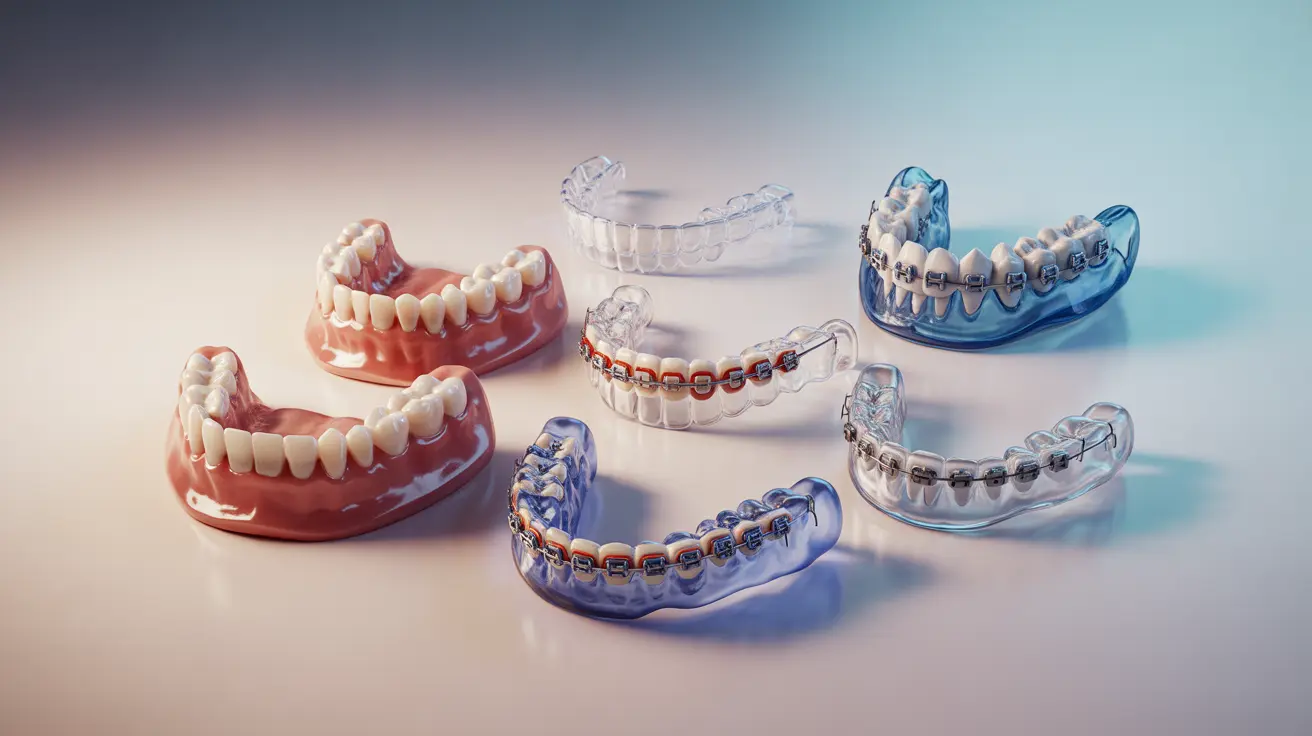For individuals seeking a more flexible approach to orthodontic treatment, removable braces offer an attractive alternative to traditional fixed braces. These innovative dental appliances provide the benefit of teeth straightening while allowing patients greater control over their treatment experience. Understanding how removable braces work and their various options can help you make an informed decision about your orthodontic care.
Understanding Removable Braces
Removable braces are orthodontic appliances designed to gradually shift teeth into proper alignment while offering the convenience of being removable during eating, drinking, and cleaning. Unlike traditional fixed braces, these devices can be taken out when needed, making them a popular choice for both teenagers and adults seeking orthodontic treatment.
Types of Removable Braces
Clear Aligners
Clear aligners are the most popular type of removable braces. These custom-made, transparent plastic trays fit snugly over your teeth and apply gentle pressure to move them into the desired position. Treatment typically involves wearing a series of progressively adjusted aligners, with each set worn for about two weeks before moving to the next.
Removable Retainers
While primarily used after orthodontic treatment, some types of removable retainers can also serve as corrective devices for minor tooth alignment issues. These include Hawley retainers (with wire and acrylic components) and clear plastic retainers that look similar to aligners.
Functional Appliances
These devices are specifically designed to correct bite issues and are commonly used in growing children. They work by repositioning the jaw while simultaneously aligning the teeth, addressing both cosmetic and functional concerns.
Benefits of Choosing Removable Braces
Removable braces offer several advantages over traditional fixed braces:
- Enhanced oral hygiene maintenance
- Improved comfort and aesthetics
- Flexibility for special occasions
- No food restrictions
- Easier dental check-ups and cleaning
- Less emergency dental visits
Treatment Process and Timeline
The journey with removable braces typically begins with a comprehensive dental examination and 3D scanning of your teeth. Your orthodontist will create a customized treatment plan based on your specific needs. Treatment duration varies depending on the complexity of your case but generally ranges from 6 months to 2 years.
Care and Maintenance
Proper care of removable braces is essential for successful treatment:
- Clean the appliance daily using appropriate cleaning solutions
- Store in protective cases when not in use
- Remove before eating and drinking (except water)
- Wear as prescribed by your orthodontist
- Maintain regular dental check-ups
Frequently Asked Questions
What are removable braces, and how do they work to straighten teeth?
Removable braces are orthodontic appliances that can be taken out as needed. They work by applying consistent, gentle pressure to gradually move teeth into proper alignment. The most common types use a series of custom-made aligners or specialized retainers that progressively shift teeth into their desired positions.
What are the benefits of using removable braces instead of traditional fixed braces?
Removable braces offer greater flexibility, improved aesthetics, better oral hygiene maintenance, and no food restrictions. They're also typically more comfortable than fixed braces and allow for easier dental cleaning and check-ups.
Can removable braces be used for severe orthodontic issues, or are they only suitable for mild alignment problems?
While removable braces are most effective for mild to moderate alignment issues, advances in technology have expanded their capabilities. However, severe orthodontic problems may still require traditional braces or a combination of treatments. Your orthodontist can determine the most appropriate option based on your specific case.
How often should I wear removable braces, and when can I take them out?
Most removable braces should be worn 20-22 hours per day, only removing them for eating, drinking, and cleaning. They can also be temporarily removed for special occasions, but consistent wear is crucial for successful treatment.
What are the common types of removable braces, and which one is best for my specific orthodontic needs?
Common types include clear aligners, removable retainers, and functional appliances. The best option depends on various factors, including the severity of your orthodontic issues, age, lifestyle, and treatment goals. A consultation with an orthodontist can help determine the most suitable type for your specific needs.




